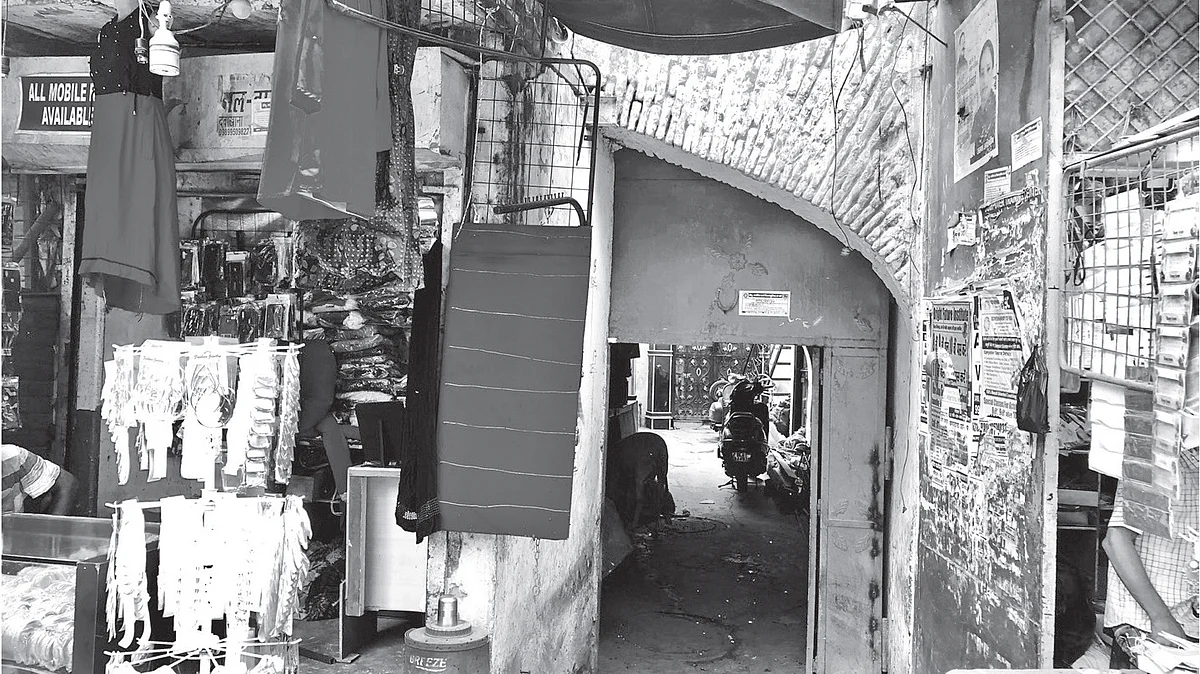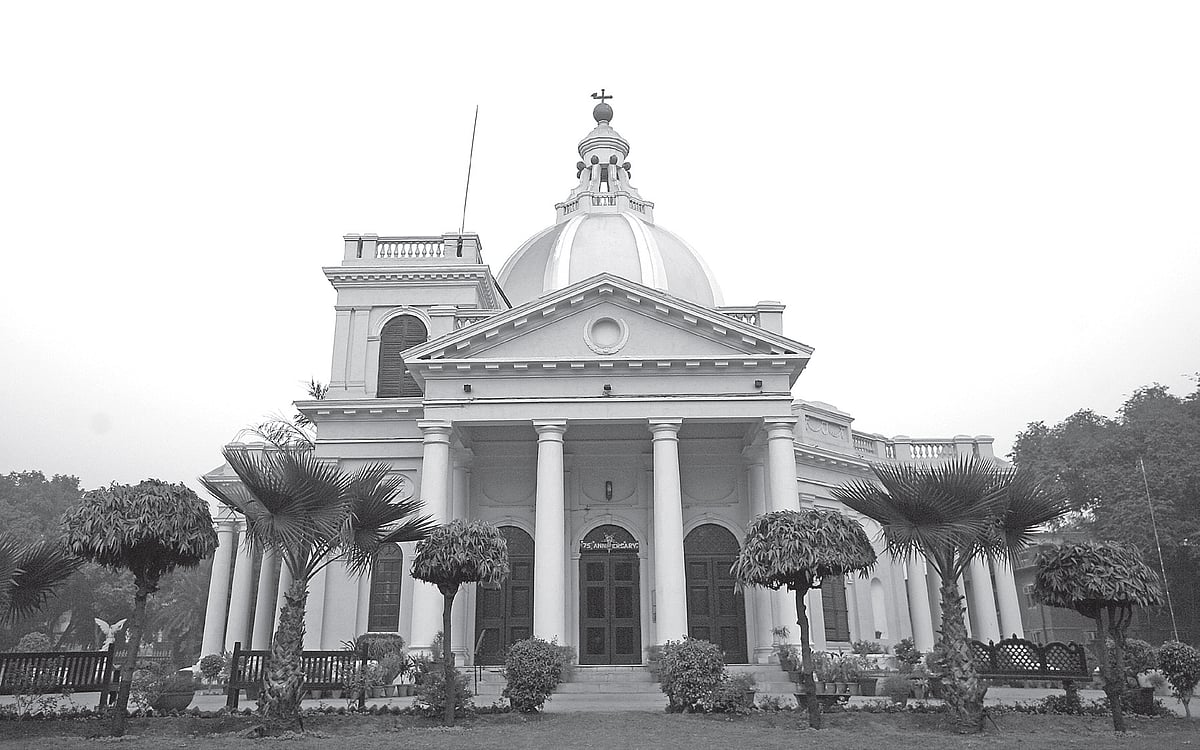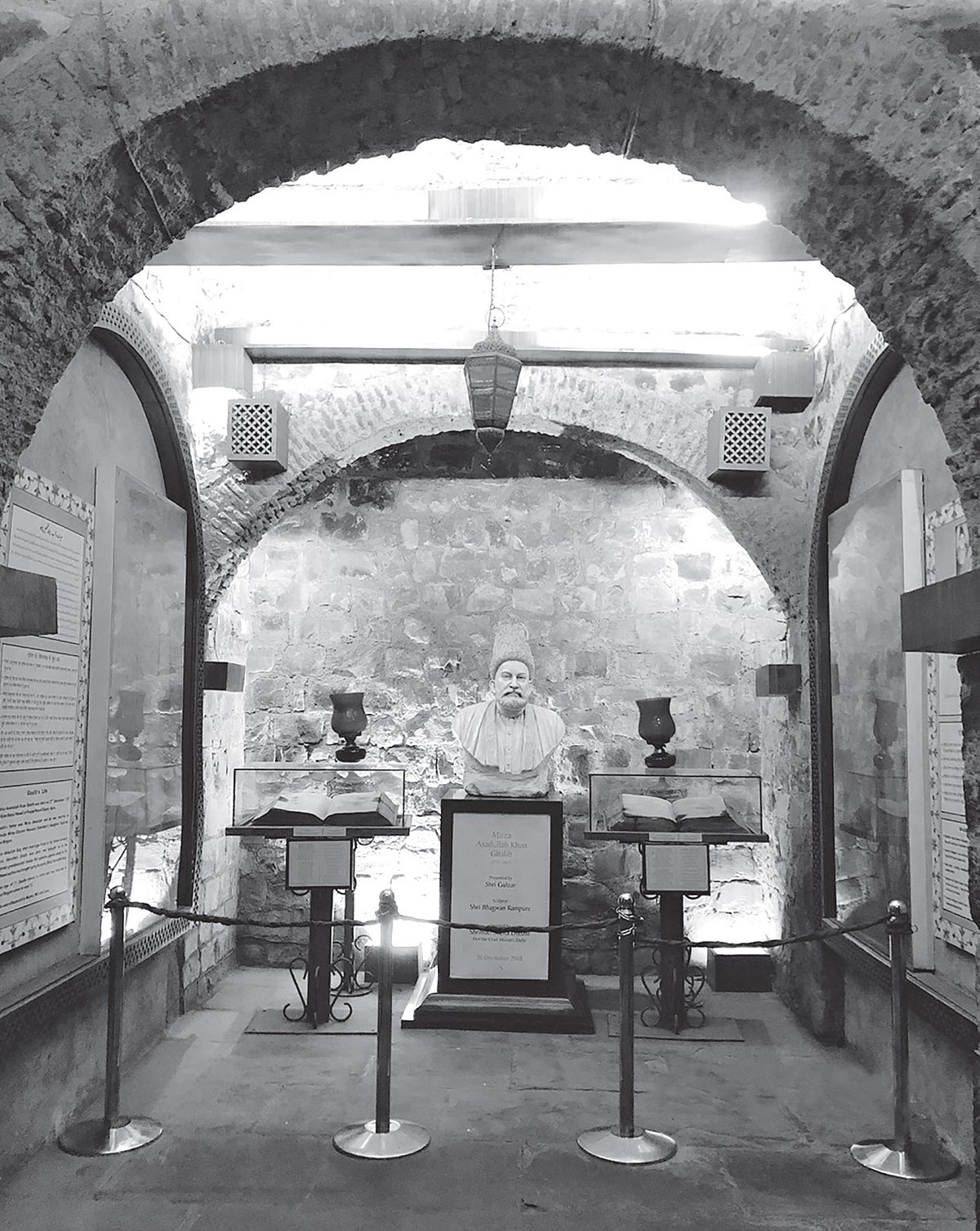Shahjahanabad: A walk down memory lane in Old Delhi
What is today the overcrowded, neglected city of Old Delhi was once the magnificent capital of the Mughal Empire and the British. Excerpts from a book chronicling its glorious past

When going from the Digambar Jain Lal Mandir towards Fatehpuri Masjid, towards the end of Chandni Chowk, on the left, there is a signage with Ballimaran written on it. It is popular because this area houses Ghalib ki Haveli.
This area had residences of many rich and important nobles, particularly Hakim Ajmal Khan and the nawabs of Loharu. There are two theories related to its name, one being that there was a stream flowing into it and people needed oars (balli) to navigate. The second version is that oarsmen or makers of oars lived here. Bashiruddin Ahmad Dehlvi gives a list of huge havelis in the area and doubts the second theory.
It was an area famous for its hakims, and the famous Hakim Ajmal Khan lived here in Sharif Mahal. Today this area is teeming with restaurants and optical shops.
Sadiah Aleem, a journalist, spent her childhood in this area. She reminisces:
The Ballimaran of my childhood was the Ballimaran of beautiful arches and open roofs breathing in the fresh air. It was the place where life was actually alive … where sounds of azaan would mingle with cooing of the doves and the bells tied around the neck of goats. The Ballimaran of my childhood was also the wood stove of my grandmother where she would cook apple preserves, kheer and various types of curries for us. This was the place where two diyas with neem and rose petals would be lit to collect the soot to make the kajal which would smile in my grandmother’s eyes.
Today Ballimaran is famous for Ghalib’s Haveli, but when I was a child there was a shop selling wood and charcoal where a man in a white banian and blue tehmat would be sitting on a huge wooden settee smoking a huqqa. Next to him was his pet ram that would flirt with the goats in the lane … The ram had long curled horns and we children would be scared of it. I would venture there only behind the protective presence of my maid.
While she chose wood for the stove I would get a curious sense of pleasure in playing in the charcoal and dirtying my clothes and getting soot in my hair! That Ballimaran is now only a dream that calls out to me and makes me restless and nostalgic.
Today Hindustani Dawakhana is famous, but for us children it was a series of rooftops we would jump over, playing hide and seek, feeding the monkeys and without a care in the world. Of course, we were always careful not to disturb any jinn whose stories our elders would tell us.
Today Ghalib’s Haveli is shining brightly and a proud memorial to one of the brightest jewels of India and indeed the world. The childish laughter and spooky stories of Jinn Mamu have now given way to a wholesale market for spectacles and shoes.
From here we’d sneeze our way through chillies and spices to my paternal grandparents’ home in Phatak Habash Khan via Khari Baoli. The narrow lanes would suddenly widen and also fall silent. This area had bigger houses, with floral tiles on their arches.
This house had an underground room called tehkhana and that would give us succour on burning hot summer afternoons.
This was a mixed mohalla and we had Hindu and Muslim friends who would run all over the rooftops, feeding bananas to monkeys who were considered the embodiment of Lord Hanuman.
At night we would sprinkle the courtyard with water and sleep on charpoys and spend the nights counting stars and finding the rabbit on the moon. Smell of the bela flowers would fill our senses.
Those days of innocence, those days of communal harmony and joy keep knocking on the doors of my heart ever so often.
Sir Sayyid Ahmad Khan ki Haveli
Az Naqsh wa nigaar-e dar wa deewar shikasta
Asaar-e padeed ast sanadeed-e ajam ra
The marks and engravings on the ruined walls and gates
(They are) the remnant signs of Persia’s ancient monuments
—Urfi
For four years I was engrossed in translating the two editions of Sir Sayyid Ahmad Khan’s book on Delhi: Asar-us Sanadid. In pursuance of that, I visited each and every monument that he has listed in both. Though he talks only of 130 monuments in the second book, in the first there is a detailed description of almost every building present in Shahjahanabad in 1847.
In that he described the haveli of his maternal grandfather, Nawab Dabir-ud Daulah Marhoom: ‘Towards Faiz Bazar is the haveli of Nawab Dabir-ud-Daulah Amin-ul-Mulk Khwaja Farid-ud-din Ahmed Khan Bahadur Masleh Jung. This haveli used to belong to Nawab Mehdi Quli Khan and was bought by him after his death.’
Sir Sayyid’s mother Aziz-un-Nisa, was the eldest daughter of Khwaja Farid. Khwaja Farid’s family, originally from Iran, had migrated to Delhi two generations earlier. Sir Sayyid Ahmad Khan’s grandfather was Mughal aristocracy, and was given the title of Jawwad-ud-daula, as well as a mansab of 1,000 infantry and 500 cavalry, in the reign of Alamgir II. Sir Sayyid inherited this title at the age of nineteen after his father, Syed Mohammad Muttaqi Khan Bahadur, who held the mansab and title before him, passed away. Sayyid Muttaqi was a mystically inclined man with an uncertain income as the Mughal Empire was on the decline and his pension would be irregular and at times less than the assured amount.
His ancestral mansion was near Jama Masjid, and had suffered in the various attacks on Shahjahanabad in the 18th century. At the time of his marriage to Aziz-un-Nisa, it was unfit for living in and perhaps he lacked the resources to repair it.
Prof. Iftikhar Alam Khan in his book, Sir Syed: Daroon-e Khana, refutes the common perception that Sayyid Muttaqi moved in with his father-in-law and writes that after his marriage to Aziz-un-Nisa, he moved in to a new house built for his wife in the precincts of his father-in-law Khwaja Farid’s palatial mansion, known as Haveli Mehdi Quli Khan. A road separated the two havelis.
Sir Sayyid Ahmad Khan was born there on October 17, 1817.
Anyway, as part of my research, I went to Faiz Bazar that is now Daryaganj and into the road named after him, Sir Syed Road, to find his haveli. I had already received many emails from Aligarians living abroad about the pathetic condition of his haveli, so I was more or less prepared to witness degradation, but even then it came as a shock. The Faiz Bazar area was once the pride of the Mughal Empire, and that is why Nawab Dabir-ud-Daulah had his haveli there. It is now, as in fact is most of Shahjahanabad, little better than an urban slum, with hanging wires and encroachment and dirt.
The entrance to this haveli, which must once have been a grand gateway, is now encroached on by a shop selling bags. The half that was approachable was whitewashed, and one could see the lakhori bricks and the grime of ages. If there were any naksh-o nigar (ornamentation) here earlier, they had faded away with time. The entrance was occupied by a number of goats, and I had to jump over them to cross over to what must have once been a deorhi. Today it has a couple of doors.
Where was the Naqqarkhana? Were the goats today’s musicians?
An open door showed an aangan (courtyard) and some arched doorways. The present owner of the house was gracious enough to offer us tea, but he denied that it belonged to Dabir-ud-Daulah or Sir Sayyid. He himself had bought it from a Jameela Khwaja after the Partition. The portion of the haveli that was on the street has long been demolished. All one can see after this darwaza are rows of very ugly flats and then another grand darwaza.
This time around, the darwaza was not encroached, but it had a fruit stall in front of it. When we entered, we found similar scenes of encroachment and crumbling heritage.
St James Church
Colonel James Skinner built this church on Lothian Road. Skinner, a mercenary,
was the son of a Scottish father and Rajput mother. He was popularly known as Sikander Sahib. He raised an irregular light cavalry regiment known as Skinner’s Horse, as it was a regular practice for resourceful men to raise irregular fighting units and pledge them, and themselves, to various factions fighting territorial wars in the 18th and 19th century. He served with his regiment under Maharaja Scindia initially. When Scindia fought against the East India Company, he joined the latter as he didn’t want to fight the British. The regiment is still a part of the Indian Army as 1st Horse (Skinner’s Horse). Skinner died and was buried in Hansi (in Haryana) before his remains were moved to the St. James Church.
When he lay wounded in the battle of Uniara in 1800, Skinner had vowed that he would build this church if he survived. The St James Church was consecrated in 1836. Built at a cost of Rs 95,000 by Colonel James Skinner (1778–1841) from his own funds, it took ten years to build. It was built opposite his haveli and designed by Major Robert Smith, a British army engineer. The architecture is Palladian and the design is on a cruciform plan. The three porticoed porches and the majestic central dome with its ball and cross on top strike the visitor first.
The church has spacious, well-manicured grounds. When I visited it, I was in for a treat — the two huge stained-glass windows behind the altar, depicting the crucifixion and resurrection of Christ, are exquisite! As the uniform of the soldiers of Skinner’s Horse was a bright yellow, they were often referred to as the Yellow Boys. It is appropriate then that the church is also painted yellow.
Follow us on: Facebook, Twitter, Google News, Instagram
Join our official telegram channel (@nationalherald) and stay updated with the latest headlines


